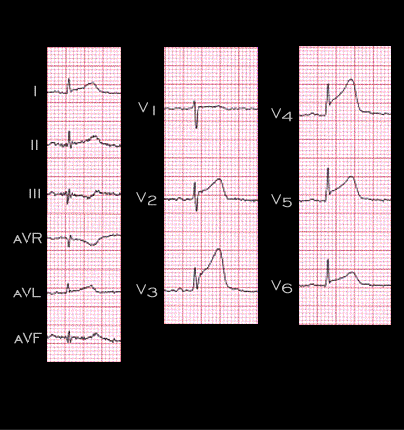
The ECG shown here provides an example of how the lead distribution of ST segment elevation localizes the ischemic region and permits prediction of the involved coronary artery. The tracing reveals elevation of the ST segment (relative to the TQ segment) that is maximum in leads V2, V3, V4 and V5, the anterior chest leads and of lesser magnitude in leads 1, aVL and V6, the left lateral leads. This suggest a large ischemic region involving the anterior and lateral left ventricular walls, the region supplied by the anterior descending coronary artery, and suggests that the “culprit lesion” is within this vessel.
Note the fusion of the elevated ST segment with the ascending limb of the T wave which appears somewhat peaked. This is a characteristic ECG feature in the early stages of an acute ischemic event and is often referred to as the hyper-acute phase of an acute myocardial infarction.
